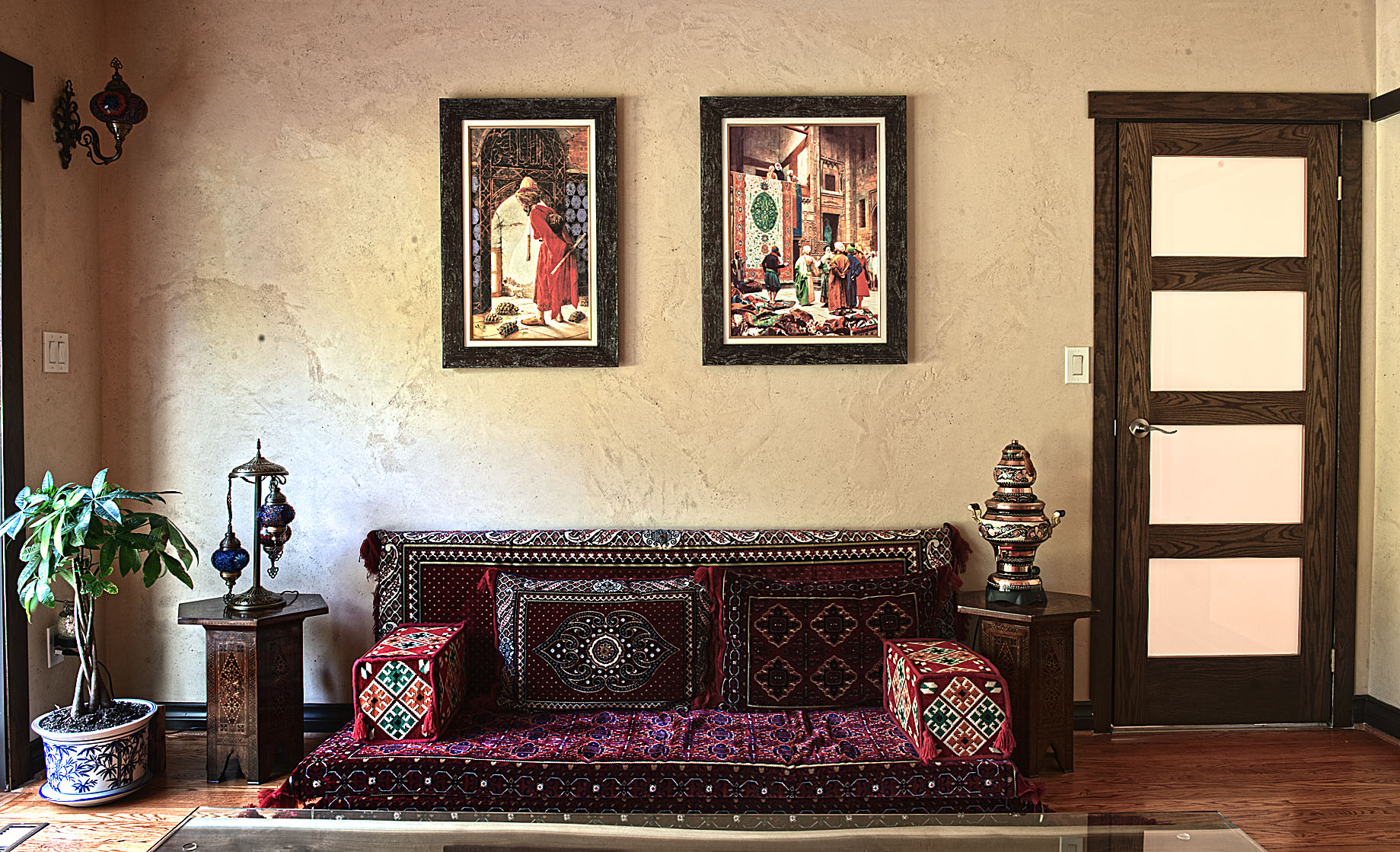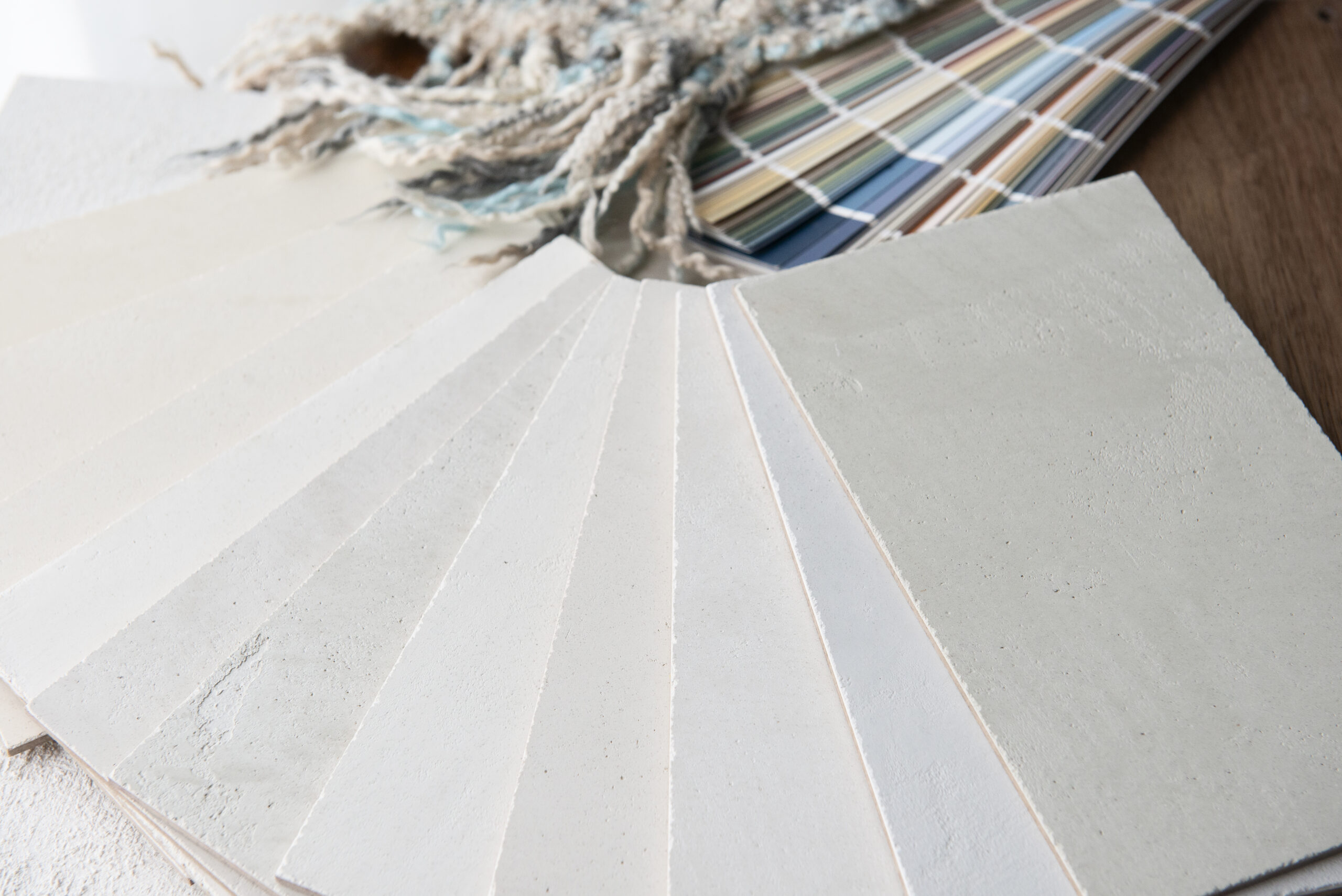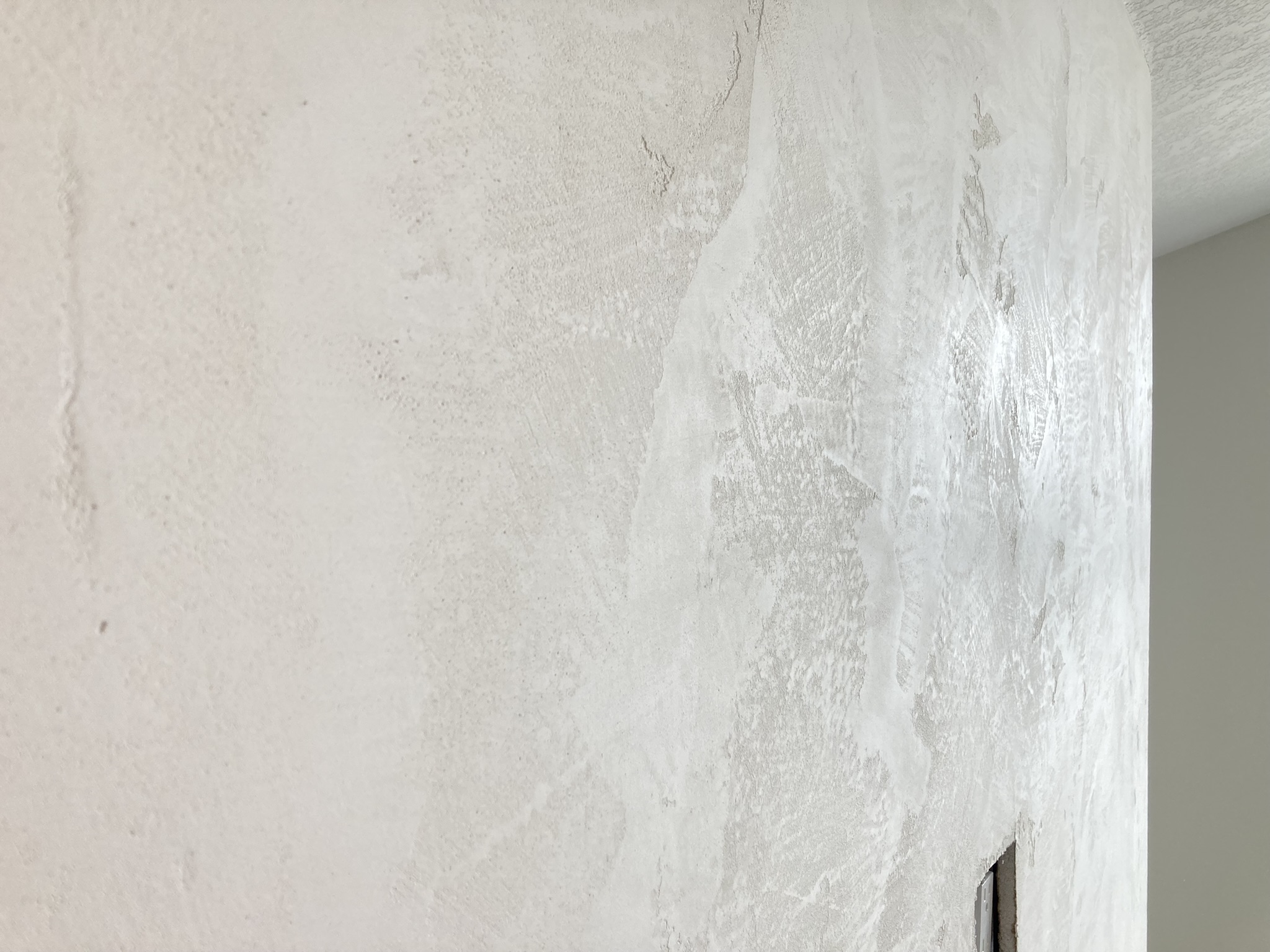The art of creating beautiful and functional spaces has evolved over time, with various cultures contributing unique techniques and materials. One of these exceptional contributions is Venetian plaster, a decorative surface treatment that has captivated the design world for centuries. In this article, we will explore the origins of Venetian plaster, delve into other traditional stone plasters and their beginnings, and examine the functional role of plasters.
Origin of Venetian Plaster
Venetian plaster’s smooth, polished appearance and timeless elegance can be traced back to ancient Roman culture, where the technique was first developed. The ancient Romans, known for their advanced engineering and architectural prowess, created this unique lime-based plaster by combining slaked lime, marble dust, and pigments. The use of marble dust and pigments allowed for the creation of a variety of colors and finishes, resulting in a versatile material that could be tailored to suit different design preferences.
The technique eventually made its way to Venice, Italy, where it was embraced by the Venetian culture and quickly became popular among the wealthy and influential. In the lavish homes and palaces of Venice, Venetian plaster was used to create stunning interiors that showcased the expertise of the artisans and reflected the opulence of the time. The plaster’s name is derived from its widespread use in Venice, a city that has long been renowned for its decorative arts and craftsmanship.
One of the reasons for the enduring appeal of Venetian plaster is its versatility. The plaster can be applied in multiple layers, with each layer burnished to create a smooth, polished surface that resembles marble or other luxurious materials. This made it a desirable alternative to natural stone, as it was lighter and more cost-effective, yet still conveyed a sense of grandeur and sophistication.
Moreover, the Venetian plaster’s composition, based on slaked lime, provides a breathable and durable surface that can withstand the test of time. This is particularly important in Venice, a city built on water, where buildings are often exposed to high levels of humidity. The plaster’s ability to allow moisture to evaporate from its surface helps protect the buildings from dampness and decay.
Over the centuries, the art of Venetian plaster has been passed down through generations of skilled artisans, who have continued to refine and develop new techniques for applying and finishing the material. As a result, Venetian plaster has maintained its reputation as a high-quality and luxurious surface treatment, favored by interior designers and design professionals worldwide.
Other Traditional Stone Plasters and Their Origins
Throughout history, various cultures have developed their own unique plastering techniques, reflecting their rich heritage and skill. These plasters were often used to create decorative surfaces, enhance aesthetics, and serve functional purposes within their respective civilizations. Let’s explore some of these traditional stone plasters and their origins.
Egyptian Gypsum-Based Plaster
The ancient Egyptians were known for their architectural marvels, including the construction of tombs and temples. To decorate these sacred spaces, they developed a gypsum-based plaster. This plaster was created by heating gypsum, a naturally occurring mineral, to remove its water content and then grinding it into a fine powder. When mixed with water, this powder forms a paste that can be applied to surfaces and molded into intricate designs. Egyptian plaster was often adorned with vibrant pigments and used to create detailed frescoes that told stories or depicted the life and times of the pharaohs.
Ancient Greek Plaster
The ancient Greeks were also renowned for their architectural and artistic accomplishments. They made extensive use of plaster to enhance the aesthetics of their buildings and create a sense of harmony in their structures. Greek plaster was primarily made from lime, sand, and water, which were mixed together to form a versatile and durable surface treatment. This plaster was used to cover imperfections in building materials, such as bricks and stones, and provide a smooth canvas for the application of paint or decorative elements. The Greeks often employed fresco painting techniques to create vivid and lifelike scenes on their plastered surfaces.
Moroccan Tadelakt
In the Middle East, Moroccan tadelakt has been a traditional plaster used for centuries due to its waterproof properties and unique appearance. Tadelakt is made from limestone, which is heated and then mixed with water to create a workable paste. The plaster is applied in multiple layers, with each layer being polished and compacted to create a smooth, seamless surface.
The key to tadelakt’s water resistance lies in the application of a natural soap solution, which is rubbed onto the surface and reacts with the lime in the plaster to create a waterproof barrier. This property makes tadelakt an ideal choice for surfaces in bathrooms, hammams, and other wet areas. Its distinctive appearance, characterized by subtle variations in color and texture, adds a touch of luxury and sophistication to any space.
In conclusion, the history of traditional stone plasters and their origins demonstrates the ingenuity and craftsmanship of various cultures throughout time. From the gypsum-based plasters of ancient Egypt to the waterproof tadelakt of Morocco, these surface treatments have been used to create functional, beautiful, and enduring architectural and artistic masterpieces. Their continued use and appreciation in modern design serve as a testament to the skill and creativity of the artisans who first developed these techniques.
The Functional Role of Plasters: Beyond Aesthetics
While often regarded as purely decorative, plasters have long served essential practical purposes in various architectural applications. These versatile surface treatments offer an array of functional benefits, from protecting substrates to creating durable and water-resistant finishes. Let’s delve deeper into the functional role of plasters in both historical and contemporary contexts.
Protective Layer for Substrates
One of the primary functions of plaster is to provide a protective layer over various substrates, such as brick or stone. This protective layer shields the underlying materials from the elements, including moisture, temperature fluctuations, and physical wear. By preserving the integrity of these substrates, plaster helps ensure the longevity of buildings and structures, safeguarding both their appearance and structural stability.
Water-Resistant Properties
Certain plasters, like Moroccan tadelakt, possess water-resistant properties, making them ideal for use in wet areas. These plasters create a waterproof barrier that prevents moisture infiltration, reducing the risk of mold and mildew growth, and protecting the structure from potential water damage. This functionality has made such plasters a popular choice for bathrooms, hammams, and other areas exposed to water and humidity.
Aesthetic Versatility
As the decorative aspect of plasters has evolved, artisans have developed an array of intricate designs and finishes that elevate the aesthetics of interior spaces. Venetian plaster, for example, can be manipulated to mimic the appearance of marble or other luxurious materials. This adaptability allows designers to achieve a high-end look without the cost, weight, or installation challenges associated with natural stone.
In addition, the ability to tint plaster with pigments enables the creation of customized colors and finishes, offering a wide range of design possibilities. This versatility empowers design professionals to craft unique, tailored spaces that reflect their clients’ tastes and preferences.
In conclusion, the art of plastering showcases the ingenuity and creativity of various cultures throughout history. Venetian plaster, along with other traditional stone plasters, serves not only a functional purpose but also elevates the aesthetic of interior spaces. The enduring appeal of these decorative surfaces is a testament to the skill and craftsmanship of the artisans who first created them. Their continued popularity among design professionals highlights their timeless beauty and the essential role they play in the world of architecture and interior design.




